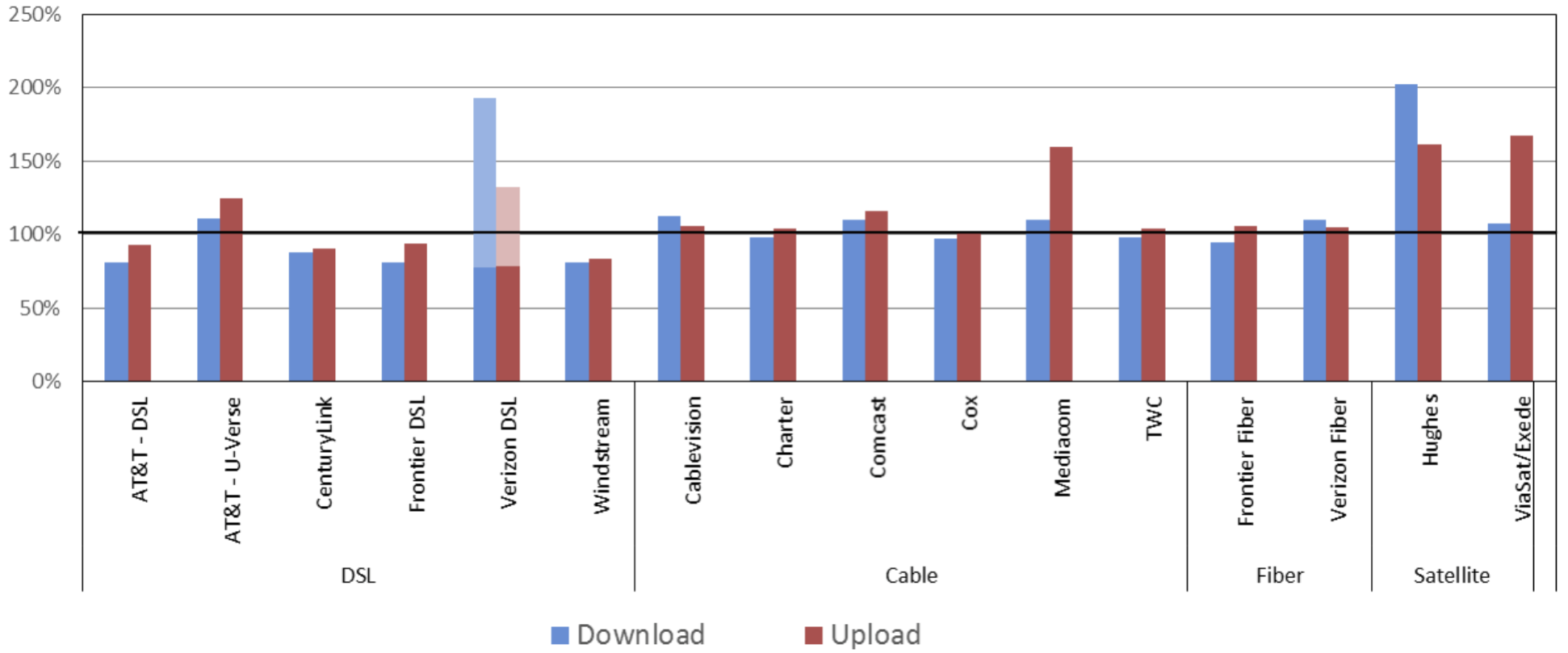
The Federal Communications Commission issued its annual fixed broadband service measurement report just as it slid into the New Year’s holiday. I’m still slogging through the technical data, but the top line conclusions are…
- Overall, the FCC says, residential broadband speeds and other performance metrics continue to improve.
- Cable modem service is fast with maximum advertised speeds in the 100 megabit range, faster in real world circumstances than fiber, although only Verizon’s and Frontier’s fiber service were measured. Gigabit-class systems, such as Google Fiber weren’t included. The limiting factor for telco-managed FTTH is provisioning, and not the glass.
- Telco copper-based service is falling farther and behind. Verizon and Frontier, and legacy AT&T DSL pretty fail across the board, Uverse is better, but still lags far behind cable.
Cable did a good job too of matching actual delivered speeds to advertising claims, as did AT&T’s Uverse, albeit with slower advertised bitrates. DSL speed claims were less reliable across the board…
Some ISPs using DSL technologies continue to advertise “up-to” speeds that on average exceed the actual speeds experienced by their subscribers…Even though the actual download speeds experienced by most ISPs’ subscribers are close to or exceed the advertised download speeds, for each ISP there are some panelists for whom actual download speed falls significantly short of the advertised download speed. Relatively few subscribers to cable, fiber, or satellite broadband service experience such shortfalls.
Consistency metrics – which in some regards are the most important of all in terms of customer satisfaction – were similar.
2015 Measuring Broadband America Fixed Broadband Report, Federal Communications Commission
